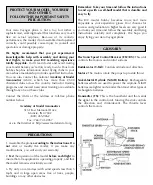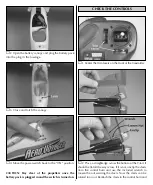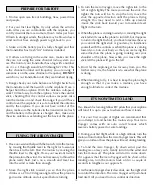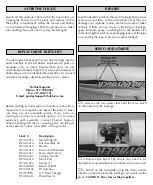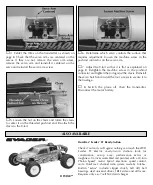
Your Aero Voyager plane is not a toy, but rather a
sophisticated, working model that functions very much
like an actual airplane. Because of its realistic
performance, the model, if not assembled and operated
correctly, could possibly cause injury to yourself and
spectators or damage property.
We highly recommend that you get experienced,
knowledgeable help with assembly and during your
first flights, to make your R/C modeling experience
totally enjoyable.
You’ll learn faster and avoid risking
your model before you’re truly ready to solo. Your local
hobby shop has information about flying clubs in your
area whose membership includes qualified instructors.
You can also contact the national
Academy of Model
Aeronautics
(AMA), which has more than 2,500
chartered clubs across the country. Instructor training
programs and insured newcomer training are available
through any one of these clubs.
Contact the AMA at the address or toll-free phone
number below.
Academy of Model Aeronautics
5151 East Memorial Drive
Muncie, IN 47302
(800) 435-9262
Fax: (765) 741-0057
or via the Internet at: http://www.modelaircraft.org
1. Assemble the plane
according to the instructions. Do
not
alter or modify the model. If you make any
modifications, you will void your warranty.
2.
Test
the operation of the model
before each flight
to
insure that all equipment is operating properly, and that
the model remains structurally sound.
3. Fly only on calm days (with wind speeds less than 5
mph) and in large open areas free of trees, people,
buildings or any other obstacles.
Remember: Take your time and follow the instructions
to end up with a well-built model that is durable and
easy to fly.
The R/C model hobby becomes more and more
enjoyable as your experience grows. Your chances for
success and graduation to higher levels are very good if
you take your time and follow the assembly and flying
instructions carefully and completely. We hope you
enjoy flying your Aero Voyager plane.
Electronic Speed Control/Receiver (ESC/RX):
This unit
controls the motors and control surfaces.
Ruddervator (V-Tail):
Controls altitude and direction.
Motors:
The motors rotate the props to provide thrust.
Nickel-Metal Hydride (NiMH) Battery:
Rechargeable
batteries which are used to power the airplane. NiMH
batteries are lighter and smaller than most other types of
rechargable batteries.
Transmitter (TX):
This is the hand-held unit that sends
the signal to the control unit. Moving the stick controls
the direction and climb/decent. The throttle lever
controls the motors.
GLOSSARY
PRECAUTIONS
PROTECT YOUR MODEL, YOURSELF
AND OTHERS.
FOLLOW THIS IMPORTANT SAFETY
PRECAUTION
2


